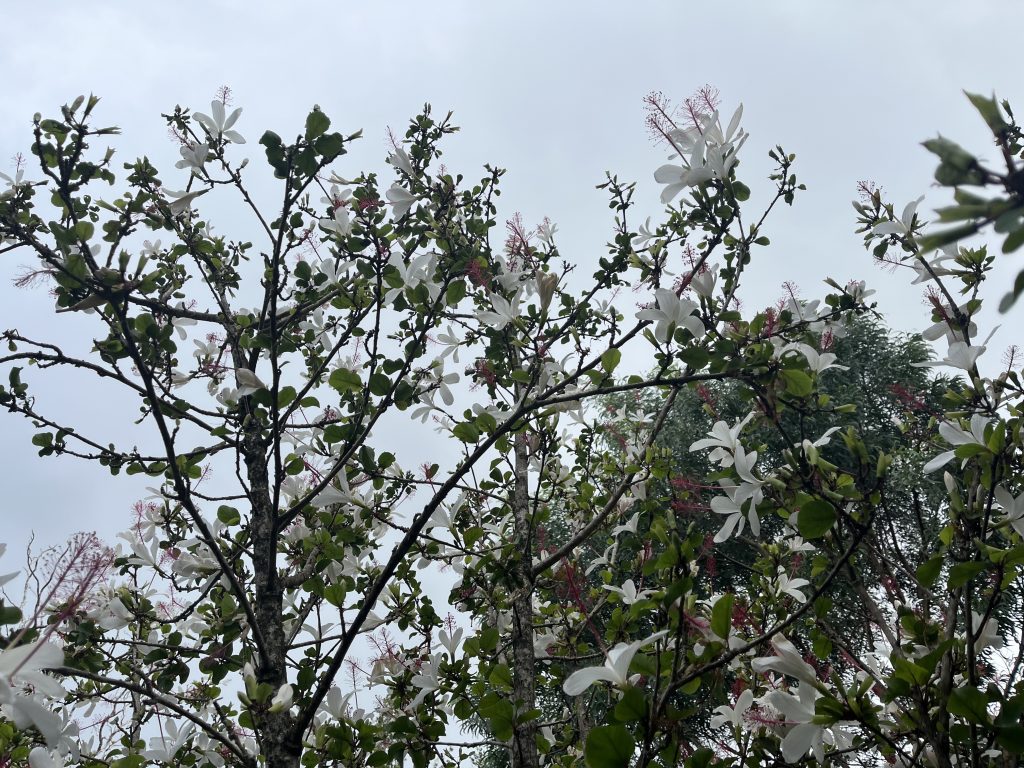Ulu Kanu: Hibiscus arnottianus

Why Hibiscus?
The blooming periods for this plant are year round, but there are certain times when they just pop off something special, and this is one of those times. Whether you find yourself in the Waiʻanae range, the eastern Koʻolau mountains, or in a botanical garden, when you see these blooming at their best, it is really a sight to see. It’s like being lucky enough to be in Japan during cherry blossom season- you just feel blessed to be in the presence of their beauty and their scent. Indeed, Hibiscus arnottianus and H. waimeae are the only naturally fragrant hibiscuses in the whole world. The scent of this particular flower is most fragrant in the early morning as they open or in the early evening before they close. So, really, get yourself to someplace where they’re growing (or grow them yourself and enjoy them later) because you will not be disappointed.
More about Kokiʻo Keʻokeʻo
Also known as aloalo (a general name for hibiscus), it comes from the Malvaceae family and has relatives such as cacao, durian, and cotton. It can grow into a shrub or a tree that reaches about 14 feet. With around 300 species of hibiscus in the world, only six are native to Hawaiʻi, and five of them are endemic. The beautiful flowers are shade tolerant and can grow in full sun.
Of course, most anything grown in early Hawaiʻi needed to have many uses. These flowers could be eaten and used as a laxative. The wood from the plant could be made into cordage. And other hibiscus species were used for other purposes as well. However, these beautiful plants were also just grown outside of hale simply because they were so lovely to look at and proved to be a wonderful ornamental garden plant.
How to Grow it
Because there are so many non-native hibiscus plants and hybrids, you need to make sure that any seeds or cuttings you might collect are actually what you want. The seeds are contained in papery capsules that are brown when ripe. The capsules split open, and the fuzzy, yellowish brown seeds fall to the ground. Soak the seeds in warm water overnight and plant the ones that sink. Use a well-drained potting mix.
This plant can also grow easily from cuttings that are 4 to 6 inches long. The cuttings need to be from healthy branches without flower buds. Again, use a well-drained medium and keep the cuttings in a humid environment with the rooting medium moist. They should be ready to transplant in a few months.
If choosing to keep this plant as a bush, you will need to trim it. To let it grow naturally into a tree, simply step back and enjoy. In both cases, only prune as needed.
This plant can come under attack by aphids, whiteflies, etc. However, it is a resilient plant, and attacks by pests are almost never fatal. However, if infestations don’t seem to disappear on their own, spray the plant with horticultural oil mixed with a systemic insecticide, and they should stay under control. If the plant becomes invaded by Chinese rose beetles or grasshoppers, more light or actual physical barriers may be more helpful.
Sources
https://dlnr.hawaii.gov/forestry/info/big-tree/kokio-keokeo/
http://www2.hawaii.edu/~eherring/hawnprop/hib-arno.htm
https://www.nativehawaiiangarden.org/flowering-plants/kokio-keokeo
http://nativeplants.hawaii.edu/plant/view/Hibiscus_arnottianus_arnottianus/



